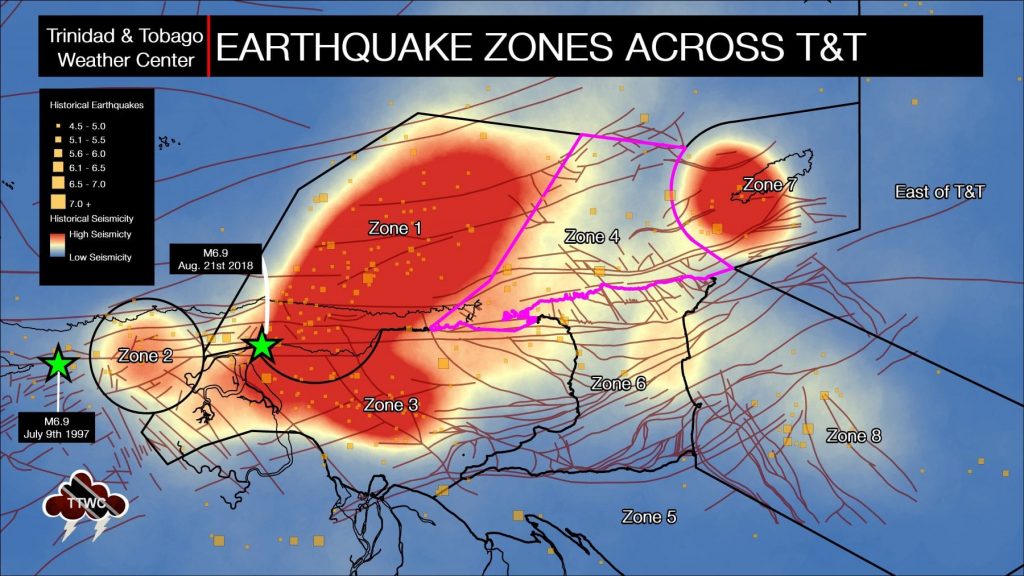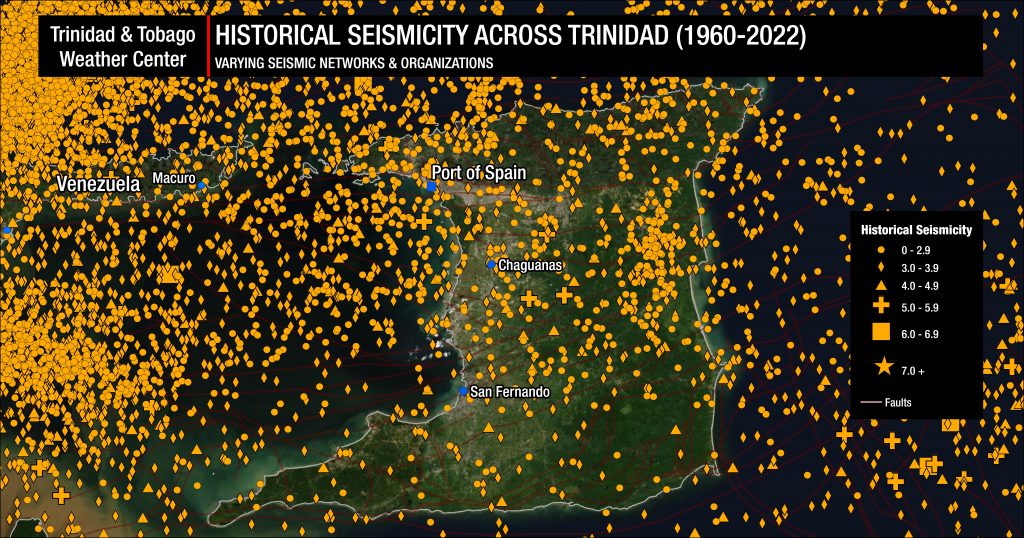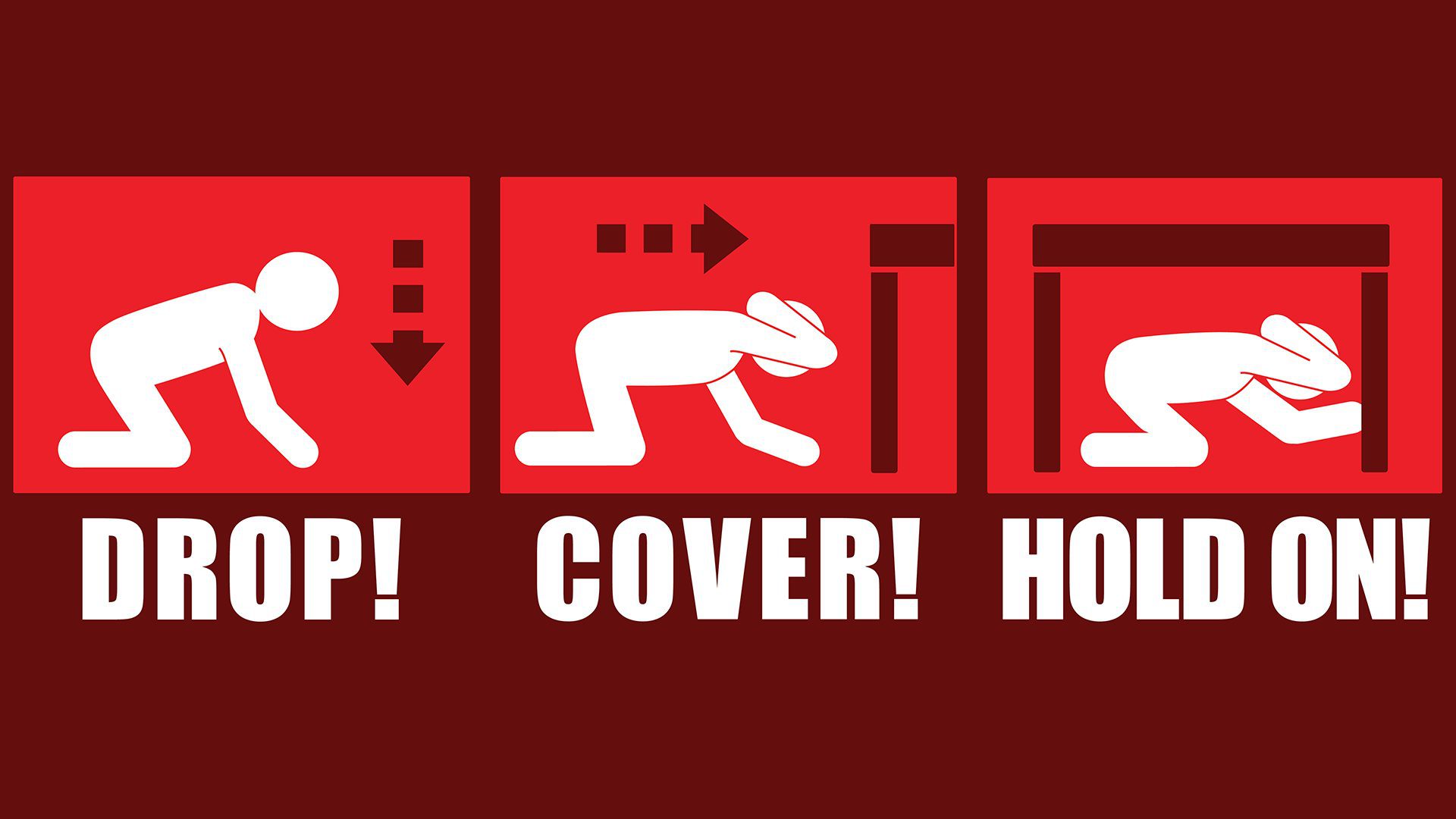At 5:42 PM on Thursday, May 6th, 2023, the University of the West Indies Seismic Research Centre (UWI SRC) recorded a minor magnitude 3.7 (mt) earthquake northwest of Trinidad. This is the third minor magnitude earthquake that has struck near or on land in Trinidad within the last 12 hours.
This latest earthquake was located at 61.800°W and 11.030°N, approximately 43.89 kilometers northwest of Diego Martin, Trinidad, 44.76 kilometers northeast of Macuro, Venezuela, and 52.45 kilometers northwest of Port of Spain, Trinidad.

This information is preliminary and will be updated when an analyst at the UWI SRC reviews the information. The UWI SRC is the authority for seismic and volcanological information in the English-speaking Eastern Caribbean.
You can submit felt reports to the University of the West Indies Seismic Research Centre.
There was no tsunami threat.
There are four conditions necessary for an earthquake to cause a tsunami:
- The earthquake must occur beneath the ocean or cause material to slide within or into the ocean.
- The earthquake must be strong, with at least a magnitude of 6.5.
- The earthquake must rupture the Earth’s surface, and it must occur at a shallow depth – less than 70 kilometers below the surface of the Earth.
- The earthquake must cause vertical movement of the seafloor (up to several meters).
None of these conditions occurred.
Note that different seismic monitoring agencies use different methods, or several methods, for processing quake parameters across the globe. Each method has its limitations and will likely produce different results within the range of the data’s uncertainty. This is generally accepted within the scientific community.

The Venezuelan Foundation for Seismological Research (FUNVISIS) also recorded a minor earthquake, measuring magnitude 3.3, in the Gulf of Paria at 10:23 AM, a magnitude 3.4 and 3.3 at 10:24 AM and 10:28 AM, respectively, and a magnitude 3.5 quake at 5:42 PM. Minor earthquakes are common within the Gulf of Paria, and this is generally no cause for concern, as these events are generally not felt.
Read More
Earthquake Magnitude & Intensity
Can earthquakes be predicted or forecasted?
Quakes North of Trinidad

Earthquakes north of Trinidad can be associated with the subducting slab of the South American Plate, resulting in a deeper hypocenter between 40-55 kilometers, but it can be deeper. Quakes in this area can also be associated with the North Coast Fault System, which runs just offshore the Northern Coast of Trinidad, where events are usually less than 40 kilometers in depth. This area typically produces light (M4.0-4.9) or moderate (M5.0-5.9) magnitude earthquakes. Earthquakes in this zone tend to produce fewer aftershocks than earthquakes elsewhere across Trinidad and Tobago.
In the UWI SRC’s profile of the area, they estimate approximately 28 events of magnitude 2.1 and above are located annually, with an earthquake in the magnitude range 4.6-5.0 occurring every five years, the most recent being in 2005.
The UWI SRC says the largest known earthquake in this area was of magnitude 6.5 and occurred on December 4th, 1954. One person was killed, and many were injured. There was a significant amount of minor to moderate damage in northern Trinidad. The biggest event since 1954 was of magnitude 5.2 and occurred on New Year’s Day of 1996.
Has there been an increase in seismic activity?

Trinidad and Tobago and the surrounding region are very seismically active. Across the Eastern Caribbean, over 2,200 earthquakes are recorded annually. Since 1990, the University of the West Indies Seismic Research Centre records an annual average of 280 earthquakes in the Trinidad and Tobago region (area bounded by 9.5°- 11.5°N & 59.5°W – 63.5°W). Of these 280 quakes, 50 of these seismic events are, on average, above magnitude 3.5.
Most earthquakes occur northwest of Trinidad in an area known as North of the Paria Peninsula, which has the second-highest seismicity in the Eastern Caribbean. According to the UWI SRC, approximately 65 events of magnitude 2.1 and above are located in the area annually.
However, the UWI SRC has said regional seismic and volcanic activity has been elevated for several years in its annual report for 2020 to 2021.
On average, the Eastern Caribbean has seen a pattern of major (M7.0-M7.9) quakes every 20 to 30 years. That pattern has stayed true. The last major (M7.0-7.9) quake occurred north of Martinique in 2007.
Historical patterns indicate that great quakes (M8.0+) on the Richter Scale have occurred every century in the region. The probability of another event at that level is high since the last >M8.0 earthquake occurred in 1843. While it is impossible to say definitively when the next great quake would occur in the region, the time since the last one is now more than 170 years ago.
It is important to note seismic activity *cannot* be predicted – meaning the precise time, date, magnitude, depth, etc., cannot be known ahead of time based on current research and technology.
Now is the time to create or go over your earthquake preparedness plan and know what to do during, before, and after an earthquake.












